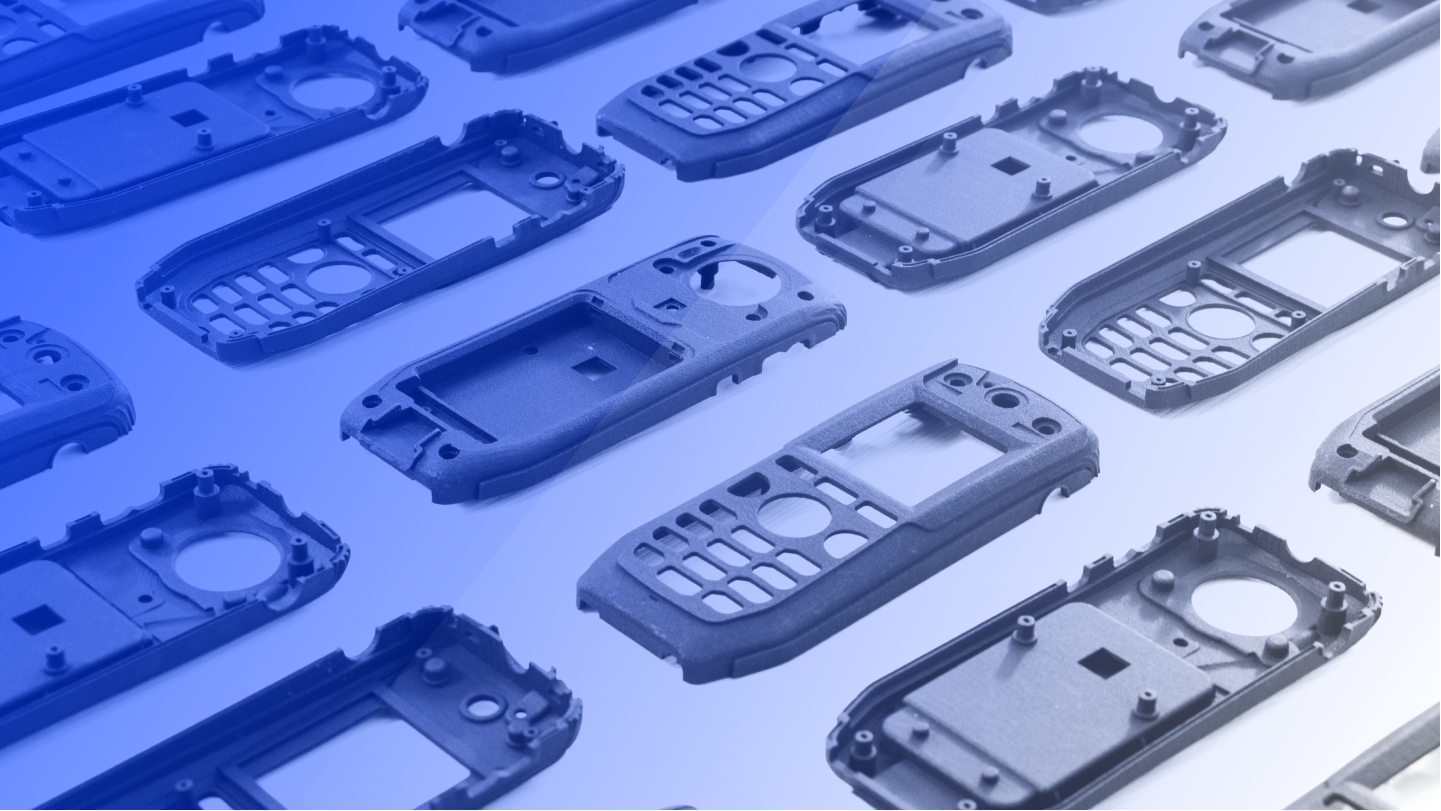Multi Jet Fusion (MJF) is a type of 3D printing technology that uses a combination of inkjet printing and heating to produce objects with high accuracy, resolution, and strength. Developed and commercialized by HP Inc., MJF technology is revolutionizing the way products are manufactured and designed. In this article, we’ll explore the details of Multi Jet Fusion, including its unique features, benefits, and applications.
What is Multi Jet Fusion (MJF) Printing?
Multi Jet Fusion (MJF) printing is a technology that uses a series of inkjet print heads to lay down small drops of a fusing agent and a detailing agent on a layer of plastic powder. The material is then melted and fused together by heat to form a solid object. Unlike other 3D printing technologies, MJF uses a combination of inkjet and thermal energy to produce parts with high precision, strong mechanical properties, and a smooth surface finish.
What Makes Multi Jet Fusion Unique?
One of the main advantages of Multi Jet Fusion is its ability to produce parts with a high level of accuracy and resolution. With a layer thickness of just 20-50 microns, MJF is capable of producing parts with fine details and sharp edges. Additionally, MJF is capable of printing large objects with a high degree of repeatability, making it ideal for applications in various industries, including aerospace, automotive, and medical.
Another unique feature of Multi Jet Fusion is its use of a special PA12 plastic powder. This material is known for its high strength and durability, making it ideal for a wide range of applications. Moreover, PA12 is a thermoplastic, which means it can be melted and reshaped multiple times without losing its mechanical properties.
Differences between Multi Jet Fusion and Selective Laser Sintering (SLS)
Selective Laser Sintering (SLS) is another popular 3D printing technology that uses a laser to fuse particles of plastic, metal, or ceramic into a solid object. While both SLS and Multi Jet Fusion produce parts with strong mechanical properties, there are some key differences between the two.
For one, SLS is limited to using only specific materials, while Multi Jet Fusion is capable of using a wide range of plastics, including PA12, which is known for its strength and durability. Additionally, MJF is capable of producing parts with a high level of accuracy and resolution, while SLS is more suited for producing large objects with complex geometries.
How much does a MJF printer cost?
The cost of a Multi Jet Fusion (MJF) printer can vary widely depending on several factors, including the size of the printer, its features and capabilities, and the vendor you purchase it from. Generally speaking, MJF printers are more expensive than entry-level Fused Deposition Modeling (FDM) printers, but less expensive than other high-end technologies such as Selective Laser Sintering (SLS) or Stereolithography (SLA).
As a rough estimate, you can expect to pay anywhere from $50,000 to $500,000 or more for a Multi Jet Fusion printer. It’s important to note that the cost of operating an MJF printer, including the cost of materials and maintenance, should also be taken into consideration when making a purchasing decision.
Multi Jet Fusion (MJF) 3D printers are commercial-grade, industrial-level machines designed to produce high-quality, high-resolution parts. There are several different models of MJF printers available on the market, each with its own unique features and capabilities.
One popular MJF printer model is the HP Jet Fusion 3D 4200, which is designed for mid-volume production and offers a large build volume of 420 x 420 x 380 mm. The HP Jet Fusion 3D 4210 is another popular model that offers similar capabilities but with a smaller build volume of 300 x 300 x 300 mm.
For large-scale production, there’s the HP Jet Fusion 3D 5200, which is capable of producing parts up to 500 x 500 x 500 mm. This machine is ideal for manufacturers who require high-volume, high-quality production capabilities.
Another popular MJF printer model is the HP Jet Fusion 3D 5600, which is designed for high-volume production and offers a build volume of 600 x 600 x 400 mm. This machine is ideal for manufacturers who require large parts and high-volume production capabilities.
In addition to these models, there are also other MJF printers available on the market, each with its own unique features and capabilities. To determine the best MJF printer for your needs, it’s a good idea to work with a vendor that specializes in 3D printing to determine the best solution for your needs and budget.
What is Multi Jet Fusion printing?
Multi Jet Fusion (MJF) printing is a type of 3D printing technology that uses a combination of heat and fusing agents to produce high-quality, high-resolution parts. It’s a powder-based technology that uses a print head to selectively melt and fuse small layers of material into a solid object.
In MJF printing, a thin layer of powder material is spread evenly across a build platform. The print head then melts and fuses specific areas of the powder, solidifying the material and building up the final object layer by layer. After each layer is fused, more powder is spread over the surface and the process is repeated until the final object is complete.
MJF printing is known for its high-quality, high-resolution parts that are comparable to injection molded parts. It’s also capable of producing parts with complex geometries, and it’s well-suited for producing large, high-volume production runs.
Overall, MJF printing is a versatile, high-performance 3D printing technology that’s ideal for a wide range of applications, including product design and development, prototyping, and end-use production.
What materials are used in multijet fusion?
Multi Jet Fusion (MJF) printing typically uses a proprietary powder material that is specifically designed for use with the technology. One of the most commonly used materials is PA12 (Polyamide 12), which is a type of thermoplastic that is known for its high strength, flexibility, and durability.
PA12 is a popular choice for MJF printing because it offers good thermal stability, making it well-suited for use in high-heat environments. It’s also resistant to abrasion and chemicals, making it ideal for applications that require high wear resistance and durability.
In addition to PA12, there are also other materials that can be used with MJF printing, including PA11 (Polyamide 11), TPU (Thermoplastic Polyurethane), and PC (Polycarbonate). These materials offer different properties and are well-suited for a variety of applications, including prototyping, product design, and end-use production.
It’s important to note that not all MJF printers are compatible with all materials, and it’s a good idea to work with a vendor that specializes in 3D printing to determine the best material for your needs and budget.
Is Multi Jet Fusion Plastic Waterproof?
Multi Jet Fusion plastic (PA12) is a thermoplastic that is resistant to water and moisture. However, it is not fully waterproof and can be affected by prolonged exposure to water or high humidity. If you need a part that is fully waterproof, you may consider using another material or adding a waterproof coating to the surface of the MJF part.
The Strongest Plastic in the World
The strength of plastic can vary greatly depending on the type of material and its application. However, some of the strongest plastics in the world include PA12 (used in Multi Jet Fusion printing), PEEK (Polyetheretherketone), and PEI (Polyetherimide). These materials are known for their high strength, durability, and resistance to heat and chemicals, making them ideal for use in various industries, including aerospace, medical, and industrial.
The Strongest 3D Printed Plastic
One of the strongest 3D printed plastics is PA12, which is used in Multi Jet Fusion printing. PA12 has a high strength-to-weight ratio and excellent mechanical properties, making it ideal for applications in industries such as aerospace, automotive, and medical. Additionally, it offers a high level of accuracy and resolution, making it possible to produce parts with fine details and sharp edges.
How Does Multi Jet Fusion Work?
Multi Jet Fusion works by using a combination of inkjet printing and heating to produce parts. The process starts with a layer of plastic powder being spread across a build platform. A series of inkjet print heads then lay down a fusing agent and a detailing agent on the powder. The material is then melted and fused together by heat to form a solid object. The process is repeated layer by layer until the entire object is complete.
What is Multi Jet Fusion Also Known As?
Multi Jet Fusion is also known as HP Multi Jet Fusion or simply HP MJF. This name reflects the fact that the technology was developed and commercialized by HP Inc.
Why is Multi Jet Fusion the Best?
Multi Jet Fusion offers several key advantages that make it one of the best 3D printing technologies available. First, it offers high accuracy and resolution, making it possible to produce parts with fine details and sharp edges. Additionally, it uses a special plastic powder (PA12) that is known for its high strength and durability, making it ideal for a wide range of applications. Finally, Multi Jet Fusion is relatively fast, making it possible to produce parts quickly and efficiently.
how MJF 3d print cost calculation?
The cost of a Multi Jet Fusion (MJF) 3D print is determined by a variety of factors, including:
- Material cost: The cost of the powder material used in MJF printing can vary depending on the specific material and the quantity used. The cost per kilogram of powder can range from $50 to $200 or more, depending on the material and vendor.
- Printing time: The printing time required to produce the final object will also impact the cost of the print. Longer printing times will result in a higher cost, while shorter printing times will result in a lower cost.
- Machine cost: The cost of the MJF printer will also impact the overall cost of the print. The cost of MJF printers can range from several thousand dollars to hundreds of thousands of dollars, depending on the printer model and vendor.
- Post-processing: Any additional post-processing that is required, such as cleaning or polishing the final object, will also impact the cost of the print.
It’s important to work with a vendor that specializes in 3D printing to get an accurate estimate of the cost of your MJF print. They can help you determine the most cost-effective material, printing time, and post-processing options for your needs and budget.
Conclusion
Multi Jet Fusion (MJF) is a powerful and versatile 3D printing technology that offers a number of unique advantages. Whether you’re producing complex geometries, fine details, or high-strength parts, MJF is an excellent choice for a wide range of applications. If you’re interested in learning more about Multi Jet Fusion or HP 3D printing, contact us today to speak with one of our experts.







